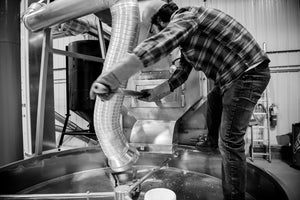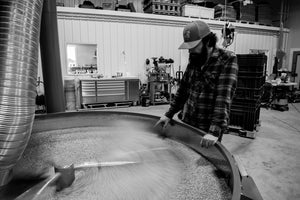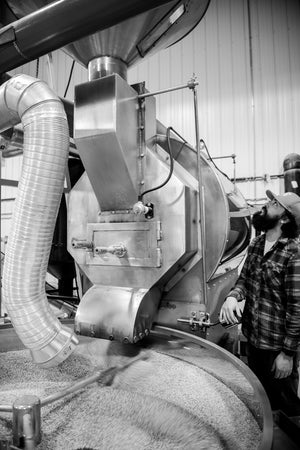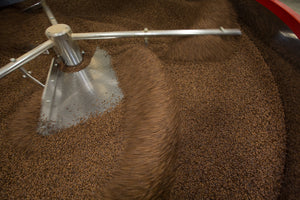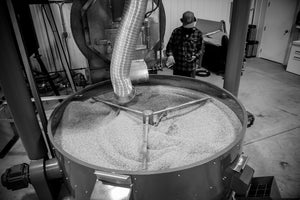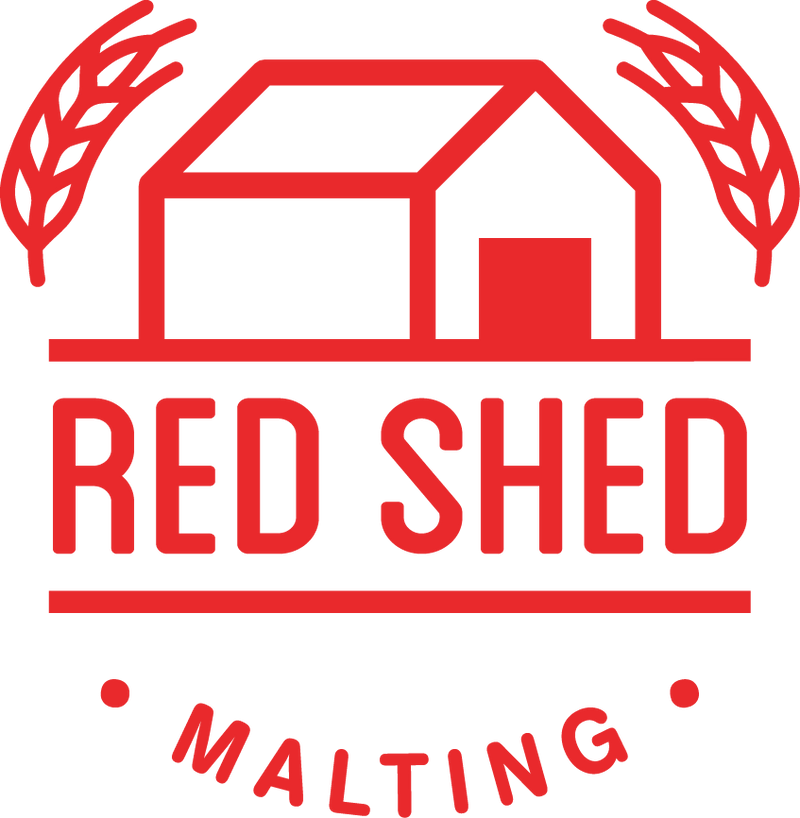Our Process
How is malt made? It's part science, part art and part alchemy.
Cleaning & Testing
The grain is stored in large grain bins once it comes off the combine. We’ll put the grain through several tests starting with a visual test. We will reject any grain showing any discolouration, disease, mold, or foreign objects. Then we conduct a germination test where we can determine if the grain is alive and whether it will be sensitive to moisture. We will also perform a protein test. Once we have determined if the grain will be good for malting it is sent to a grain cleaning facility. Here they remove small kernels, dust, chaff and any other grains that might have got mixed in. Then it is returned to the Red Shed for steeping.
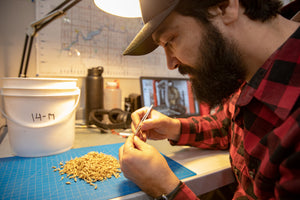
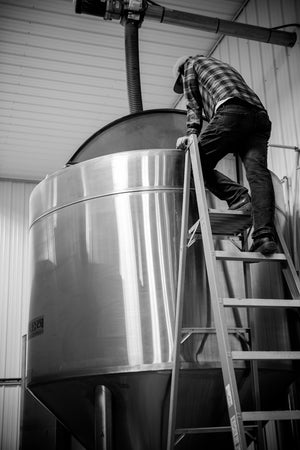
Steeping
After the grain is harvested it must be cleaned, sized and tested to make sure it meets the most stringent specifications. The first step of the malting process is steeping: creating the conditions for the grain to grow. It is soaked to increase the moisture to initiate the growth process. In this step, we take the grain that is roughly 13.5% moisture and bring it up to 44% moisture. We achieve this over a 48 hour period, with 3 wet cycles, with air rests in between each cycle. The first wet cycle will help to further wash and clean the incoming grain. During the wet period, the grain will absorb the oxygen from the water and this will help start the growth of the kernels. During the air rests, we remove all the carbon dioxide so that we do not kill the kernels before they have a chance to germinate. Once the grain has reached the desired moisture level, it will begin to grow steadily and uniformly. Now we can transfer the wet grain to the germination drum.
Germination
During the germination phase, the grain continues to grow. Inside the kernel cell walls and complex sugars are being broken down. Enzymes that inhibit the brewing process are reduced while ones that are required are increased. We maintain the airflow and moisture for 4 days as the kernels start to grow. It is important to maintain an even temperature and moisture level throughout the grain bed, to ensure everything grows at the same rate. In this step, we will start to see the rootlets emerge. As the roots grow, they can become tangled together and this can prevent even airflow. To avoid this we gently rotate the malt drum to mix and stir the malt. We can determine the progress of the germination, by checking the acrospire length. Once the acrospire has reached 3/4 of the length of the kernel, it is ready for the kiln.
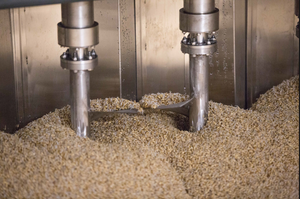
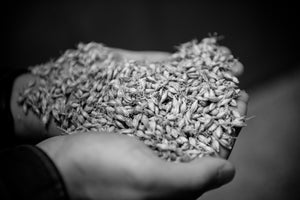
Kilning
Once starches are broken down and enzymes are at desirable levels the process needs to be halted. This is done with warm air. In the process the grain is dried down, becoming shelf-stable. At the end of the kilning cycle, temperatures can be increased to develop more complex flavours. This is where all the different flavours and colours will be developed. This process will take close to 24 hours. We start off by slowly increasing the temperature, to evaporate most of the water. As we near the end, we can increase the temperature and airflow to reach the desired colour and flavour of malt.
Malt Roasting
For the darker, coloured malts, we will process the finished malt further in our drum roaster. Here we can achieve chocolate, caramel or coffee flavours and aromas. Small batches of malt or grain are loaded into our drum roaster. The drum rotates continually so that grain isn’t scorched by the metal. Each recipe has a specific profile with different temperatures and time. By playing with these variables we can achieve a wide range of flavours. Roasting malt is a delicate balance of science and art. We fine tune recipes, but then also need to be able to react on the fly as ambient temperatures and humidity make each batch a little different. To see what is happening inside the seed, we must pull a sample, grind it and compare it to our control samples. After the malt is pulled from the drum to the cooling tray the temperature and colour will increase for a short period of time before it starts to cool. We often compare it to cooking a steak and pulling it off the grill at rare if you want it to finish at medium rare.
